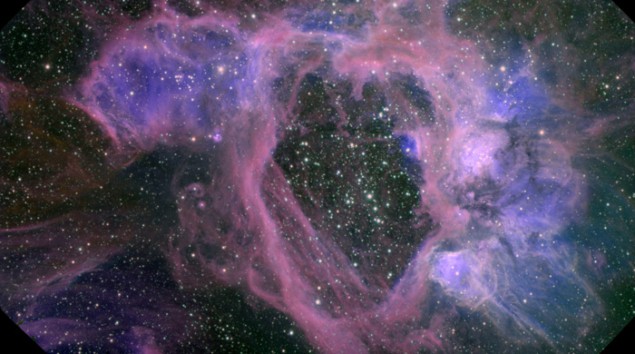
A radioisotope of iron produced by exploding stars has been discovered both on the Moon and in cosmic rays that are entering the solar system, bolstering the theory that at least two supernovae exploded within our galactic neighbourhood some two million years ago. The research has revealed that deposits from these massive cosmic blasts still rain down on Earth today. While previous research has found samples of the isotope that have accumulated on Earth and the Moon in the distant past, this is the first measurement of the present-day rate.
Previous research has unearthed deposits of iron-60 (60Fe) in deep-sea crusts and sediments at the bottom of the Earth’s oceans. These results suggested that two supernovae exploded 1.5 and 2.3 million years ago, at distances of 290 and 325 light-years from the Sun (see “Finding the earth-bound evidence for supernovae in the galactic neighbourhood”).
Moon dust
If supernovae really did explode relatively close to the Sun, then evidence should be found not only on Earth, but also elsewhere in the solar system. Realizing this, a team of scientists from the Technical University of Munich in Germany, together with colleagues in the US, has discovered an excess of 60Fe in lunar samples returned to Earth by the Apollo 12, 15 and 16 missions. The isotope is thought to enter the solar system and settle on the Moon as dust.
It is also possible that cosmic rays impacting on the lunar surface interact with elements such as nickel and create 60Fe, potentially leading to confusion. However, this type of interaction would also produce a radioisotope of manganese, 53Mn, and the ratio between the two produced by cosmic rays is fixed, says team member Gunther Korschinek. “So, an increase of 60Fe should therefore be reflected in an increase in 53Mn, if the isotope did not originate from a supernova,” he adds.
Instead, the researchers found only a surplus of 60Fe – between 10–60 million atoms per cm2. Taking into account the half-life of 60Fe, which is 2.62 million years, then at the time the isotope was deposited, its abundance on the Moon would have been between 0.8 × 108 and 4 × 108 atoms per cm2. This concentration is similar to what is been found on Earth. Korschinek told physicsworld.com that the “lunar data are objective proof that 60Fe entered our solar system around two million years ago, and has been deposited on every object in the solar system”.
Cosmic-ray cloud
Supernovae can also produce cosmic rays composed of 60Fe nuclei, and new results from NASA’s Advanced Composition Explorer spacecraft have identified a handful of these cosmic rays with energies between 195 and 500 MeV. Analysis by a team led by Robert Binns of Washington University, St Louis, indicates that the 60Fe cosmic rays also originated from the two nearby supernovae. The 60Fe is thought to have first been produced by one supernova explosion, with the shock wave of the second accelerating the 60Fe nuclei to close to the speed of light.
Although the supernovae exploded an estimated 1.5 and 2.3 million years ago, we can still detect their cosmic rays because they have been held up by the tangled interstellar magnetic field that deflects them. “It is best to think of the cosmic rays accelerated by a supernova as an expanding cloud emanating from the supernova shock wave, rather than a wave of particles that passes by,” says Binns.
Complete picture
Both of these findings, coupled with previous results, are painting a convincing picture that at least two supernovae did explode near the Sun in the past few million years. “The two Nature papers [and the results from the lunar samples] tell the same story as the ACE cosmic-ray isotope measurements are telling us,” says Martin Israel, a fellow team member of Binns. “It’s always nice to see the same conclusion from more than one line of investigation.”
The findings give scientists a means of learning more about the process of creating heavy elements within supernovae, which are then blown out into space and recycled into the next generation of stars and planets. “It opens the door to search for other long-lived radioisotopes from the same events,” says Korschinek. “Or, if the radioisotopes are much longer lived, we could search for different supernova events in our galaxy.”
Binns’ research is published in Science, while Korschinek’s research is published in Physical Review Letters.



